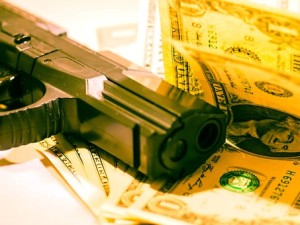 Over the last decade law enforcement agencies around the country have increased efforts to curb the illegal sale of prescription medications. There has been increased governmental oversight starting from the drug manufacturers and trickling all the way down to the patient who fills a single prescription. Pharmaceutical manufacturers are required by law to report large and unusual orders for narcotics to the DEA and pharmacies are required to keep strict inventory of these highly addictive drugs. Doctors who prescribe the drugs face tighter regulations from their state medical boards, and pain management clinics or “pill mills” that were once untouchable are being shut down and prosecuted at a higher rate. Local police have also targeted prescription fraud and doctor shopping cases, and the word is out that pharmacies won’t hesitate to call the cops at the sign of foul play. The law enforcement community has achieved some success in limiting the amount of dangerous prescription drugs such as oxycodone on the streets, but their success has come with a price.
Over the last decade law enforcement agencies around the country have increased efforts to curb the illegal sale of prescription medications. There has been increased governmental oversight starting from the drug manufacturers and trickling all the way down to the patient who fills a single prescription. Pharmaceutical manufacturers are required by law to report large and unusual orders for narcotics to the DEA and pharmacies are required to keep strict inventory of these highly addictive drugs. Doctors who prescribe the drugs face tighter regulations from their state medical boards, and pain management clinics or “pill mills” that were once untouchable are being shut down and prosecuted at a higher rate. Local police have also targeted prescription fraud and doctor shopping cases, and the word is out that pharmacies won’t hesitate to call the cops at the sign of foul play. The law enforcement community has achieved some success in limiting the amount of dangerous prescription drugs such as oxycodone on the streets, but their success has come with a price.
Heroin is now as popular and as cheap as ever, and filled the void left by the shortage of street level prescription drugs without so much as a hiccup. And despite the short supply of prescription narcotics on the street, the demand is still there. Users and dealers have not simply forgotten about oxycontin, morphine and fentanyl. But the shortage of theses drugs has driven up the price and made them more attractive to the dealers who do manage to get their hands on the product. This has left pharmacies, especially the smaller independent type, extremely vulnerable to theft by way of burglary and robbery. Most pharmacy thefts occur at night when the businesses are closed. The thieves are well versed with all drugs that can be sold on the street for a profit, and know that the narcotics are often locked away in another location. Though burglars will often break in to the pharmacies equipped with crowbars and lock cutters, these tools are ineffective if the high margin narcotics are locked up in a safe overnight. Unfortunately the only way to steal these drugs is to rob the pharmacies during business hours, which is a terrifying and dangerous alternative to nighttime burglary. It is also comes with a greater risk of serious prison time upon begin caught, as one man from Washington D.C. recently found out.
The U.S. Attorney’s Office announced the D.C. man linked to a series of pharmacy robberies in Prince George’s County has been sentenced to 150 months in federal prison where he will join his two other co-conspirators. The conspiracy included as many as four separate armed robberies that netted in excess of $20,000 worth of oxycodone. The defendants wore ski masks and at least one brandished a handgun, while another used pepper spray on two customers at a Hyattsville pharmacy. In one of the robberies in Berwyn Heights, Maryland the defendants stole an employee’s cell phone and wallet that included credit cards and identification cards. The FBI and the Prince George’s County Police Department cleared the cases, which landed all three defendants lengthy prison terms.
The Blog will continue to follow similar theft cases involving pharmacies and other businesses, and may post a follow up article in the future so stay tuned. Benjamin Herbst is a robbery, burglary and theft lawyer that handles cases in state and federal criminal court. Contact Benjamin anytime for a free consultation about your case.
Resources
Robber Sentenced to Over 12 Years in Federal Prison for Stealing Drugs and Money from Pharmacies, justice.gov.
 Criminal Defense Lawyer Blog
Criminal Defense Lawyer Blog

